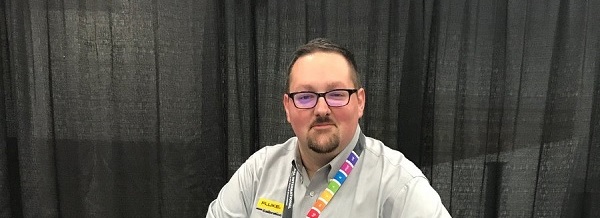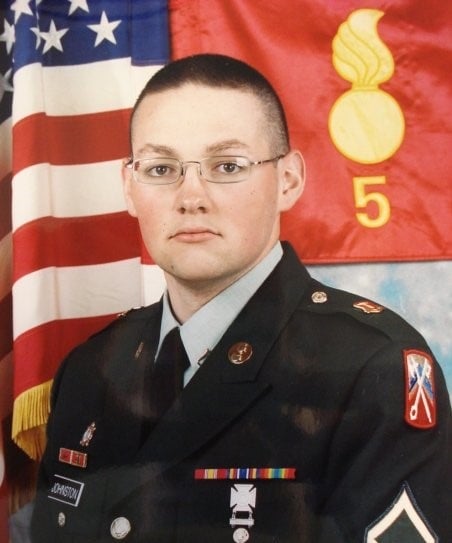- Other Fluke companies:
- Fluke
- Fluke Biomedical
- Fluke Networks
- Fluke Process Instruments
Michael Johnston Tracks His Career with MET/CAL Software

We’re celebrating the 30-year anniversary of MET/CAL Calibration Management Software with a series of blogs, articles and social posts that call out milestones and interesting points of view from some of the Fluke Calibration team.
In celebrating MET/CAL, we’re also celebrating the hundreds of MET/CAL users who have interacted with the application, and Fluke Calibration, over the past 30 years. Some of you have been with us since MET/CAL ran on DOS! Your willingness to ask questions, experiment, and offer your opinions (often strongly stated) have helped to shape MET/CAL as it is today, as well as the projects we are working on for the future.
In this post, MET/CAL Product Owner Michael Johnston recounts how he got into metrology and how he became involved with and contributed to MET/CAL over the years. He also gives us a preview of what’s coming next.

Michael Johnston began his profession in metrology during his service in the Army
A lucky accident
I got into metrology pretty much by accident. I joined the Army shortly after I turned 18. I had some jobs in mind, but they said, how about this job? I was a ham radio operator, so I had a bit of an electrical background. I agreed to the job the career counselor suggested, not having any real idea what a “Test, Measurement and Diagnostic Equipment Maintenance Support Specialist” actually did.
By chance, it turned into the perfect fit.
The job was basically that of a calibration technician. I went through job training for six months. The initial portion was a self-paced computer-based electronics course and then I got into a class for the hands-on stuff. You start out doing DMMs and move into more complex equipment. What’s great about military training is that it’s all hands-on with actual equipment, and you go down to repairing at the board level, which you don’t get to do at many other places.
Introduction to MET/CAL
I spent five years as a technician in the Army. When I got out, I got a job at Simco Electronics in Redmond, Washington. What’s interesting about calibration, coming out of the military it’s one of the few jobs where it’s basically a direct transition. The day I was officially out of the Army I started my new job and two days later I was on the bench calibrating. There are different processes and paperwork but by and large calibration is the same everywhere. The uniformity makes it easy to go right into a regular job.
I worked at Simco for two-and-a-half years and that was the first place I used MET/CAL software. We were running version 8.3 at the time. I missed out on the “fun” old stuff.
As I started using MET/CAL, I wanted to figure out what was going on behind the scenes. I taught myself MET/CAL code. Some of this was just looking at the source code as I was running something or making edits to a procedure that wasn’t working. I used the Function Select Code (FSC) Reference Guide to learn the syntax. That did not make me an expert, but I knew enough about what was going on and what things meant.
Becoming a procedure writer
I started looking for new roles and one popped up at Northrop Grumman in Los Angeles. I interviewed for the job and a big part of that role was writing MET/CAL procedures. At that time, I had edited procedures but had never written one from start to finish. I was able to answer the interview questions, though, and I understood enough about writing procedures that they hired me. Within the first two weeks I had written a procedure from scratch for a cryogenics temperature meter, and then they truly believed I knew what I was talking about.
I attended the advanced MET/CAL procedure writing course at Fluke, about a year after I started at Northrop. It was great. I walked away with a flash drive full of practice stuff. The advanced class is one of my favorites to teach because so much of it is asking things like “Ok, can you do this?” And the answer will be “Hey, let’s find out, let’s see what happens.” People who attend the class typically know enough to try things and give it a go. It’s fun to see what you can come up with.
The Fluke Calibration community forum as it exists today
Supporting the online community forum
While I was at Northrop, I got involved in the Fluke online community forum. I was the most active user in the forum. You used to get points every time you would post or reply to a question. I had more points than anybody else who was not a Fluke employee.
When the job opened up on the Fluke Calibration software support team, they made jokes about why they should hire me to do a job I’m already doing for free on the forum.
As I started applying for the role and things were moving through Fluke Human Resources, Measurement Science Conference happened. I was presenting a MET/CAL related paper and Chad Dodds, Fluke Calibration Customer Care Director -- and the hiring manager for the support team job -- sat in on it. Nothing like your next potential boss sitting in on your paper on a topic you’re expected to understand if you are hired.
Into the whirlwind: Joining the Fluke Calibration team
I was really happy to get the role on the support team. I had worked with all of them so many times, so it felt like I knew them all really well. It was 2017.
Since then it’s been kind of a whirlwind. About six months in, Chad reshuffled things and I moved over to manage the MET/CAL procedure group. That was a great fit for me. Having been a customer, I knew what kinds of procedures I had always wanted to see, and I knew the issues or the things I felt needed to be resolved. I had written procedures before, so I knew when one of the writers came up against something, I knew how to work through it and could suggest an approach. It was a great dynamic on that team.
When the MET/CAL product owner retired, I knew I wanted to move into that role. I got the job, and as we moved through my product owner training, I realized that this is indeed the role I am best suited for. Having been a customer, knowing the mind of the customer because I was one, but also knowing the Fluke side and having 13 years in the industry and at least 7 or more with MET/CAL specifically – I felt like I was right there at that perfect mix of technical expertise and history.
I am responsible for setting our road map; defining the prioritization of what gets worked on and when; and bringing in customer input to define where the products go.
What’s next for MET/CAL?
We’re working on a release planned for the fourth quarter of 2020 for MET/TEAM andMET/CAL. Over the last year, there’s been renewed focus on these products. Customers are noticing. And they’re happy about it.
We’ve had two full MET/CAL releases. We also released MET/CONNECT, which is a completely customer-driven product that we designed and built in four months. The response has been great, including working with partners like IndySoft and Qualer and Metquay and all of the integrations being built for MET/CONNECT. There are people who moved off MET/TEAM because it wasn’t a great fit for them, or who have other asset management solutions, but they want to still use MET/CAL because they know what a great tool it is. Being able to get them up to date, onto the latest version, has been great to see.
MET/CAL tips and tricks
The LIB FSC (Library FSC) allows you to interact with basically anything and I had a ton of fun playing with it, having MET/CAL write and read data from Excel spreadsheets. It’s also how we write procedures for the National Instruments cards. It’s complex and takes practice and skill to get it to work the way you want it to, but it’s a tremendously powerful tool.
In version 9.1 we added a bulk tool to convert procedures from the old format to the new PXE’s. I wish I had gotten that at Northrop Grumman because the way our procedures were structured there made it difficult to convert them, and that tool solved the problem. It’s good to see that it was recognized as something that was needed and they put it in.
MET/CAL is just so flexible and you can do so much with it. I remember finding tricks and things I could do to make it more flexible and do things more effectively. When I was at Northrop I wrote a lot of power supply procedures and I remember when I started, I’d have one for every model and I thought, well, I could just make a bunch of variables and have one procedure for the whole family. So I started doing that and having subs that were doing all this various stuff and really reuse the code, making things a bit cleaner.
I was stealing ideas from the Gold procedures library. I’d open one up and go oh, I could do that that way. And I’d take their code and reuse it. I love doing that. The joke I make is never write code that you could steal from somewhere else.
Speaking of the procedure library from MET/SUPPORT Gold, another big benefit is you can see what we do. It’s all right there. I wrote procedures for the NI cards based solely on what I had from the Gold library. I would take something that I knew worked and I would adapt it and change it and make it work with what I had.
Giving back
I love teaching. It’s nerve wracking, but also I love the opportunity to share that level of expertise. Metrology is a unique industry in that there’s not a ton of places to get the knowledge. So those of us who have it have to be willing to share it.
Although I no longer teach classes at Fluke, I continue to do things like teaching tutorials at NCSLI, not about MET/CAL but about interpreting specs. And I keep getting people from every level of expertise, from brand new techs to people who have been in the industry longer than I have, because there’s always something new to learn. Being willing to share what you know is a huge part of keeping metrology as an industry alive. That applies just as much to MET/CAL. That’s why I love the community forum too. People go on there and ask a question and you get three or four people sharing different ways that they could approach it. Some of the ideas that get posted there are just fantastic.
Related Resources and Products
MET/CAL Calibration Management Software
MET/CONNECT Calibration Integration Software
MET/CAL Warranted Calibration Procedures
MET/TEAM Test Equipment Asset Management Software
MET/SUPPORT Gold membership program
Questions about Fluke Calibration products and services? Visit our Contact Us page to find contact information for many Fluke Calibration global sites. Or call the Customer Care Center at +1 (877) 355-3225 or send email to info@flukecal.com.
- Home
- Products
- New Products
- Electrical Calibration
- RF Calibration
- Data Acquisition and Test Equipment
- Temperature Calibration
- Humidity Calibration
- Pressure Calibration
- Flow Calibration
- Process Calibration Tools
- Calibration Software
- Service and Support
- All Calibration Instruments
- Purchase Info
- News
- Training and Events
- Literature and Education
- Service and Support
- About Us


